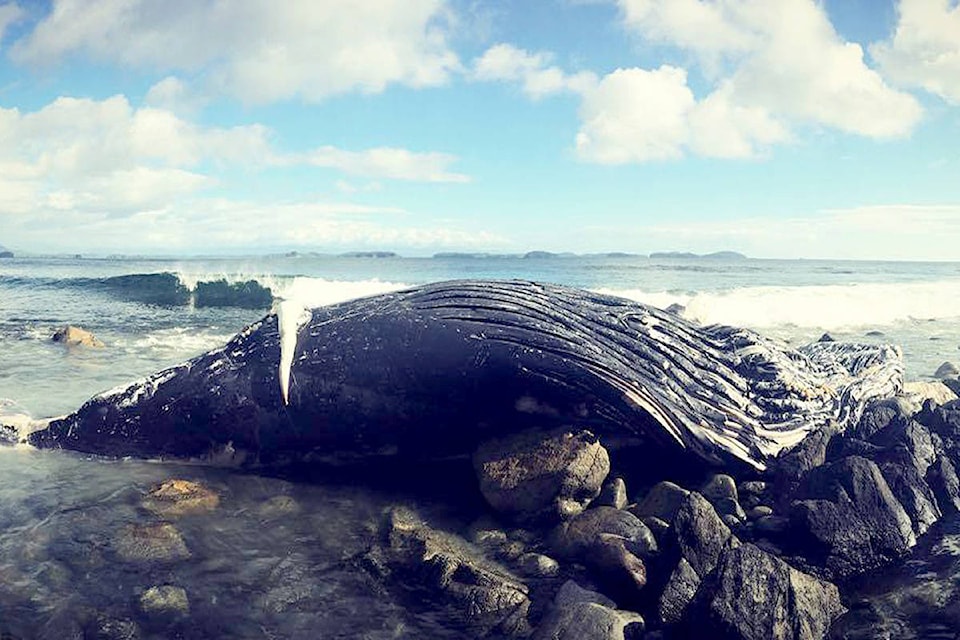The carcass of a humpback whale has washed up on shore at Twin Rivers beach near Ucluelet, on Vancouver Island.
Local marine mammal researcher Wendy Szaniszlo told the Westerly News on Sunday the area the whale washed up is around La Perouse Bank, where humpbacks are abundant and added that she particpated in a DFO survey in August where “well over 100” humpbacks were spotted.
“The humpback population is a growing population. There’s a lot of them,” she said. “They were listed as threatened and now their numbers are coming back. So, from a recovery perspective, that’s definitely a good news story…There’s definitely enough food for them, at least in this area and the fact that they’re not being hunted anymore goes a long way as well to help their recovery.”
Photos of the carcass were being shared on the Salmon Beach Village Facebook page Sunday afternoon and Department of Fisheries and Oceans Canada researchers recently conducted a necropsy that revealed the mammal had a broken jaw.
“Unfortunately the lower right jaw was dislocated, which indicates some sort of significant trauma,” said DFO Marine Mammal Coordinator Paul Cottrell. “Human interaction could be the cause of that type of impact, it could be a vessel for example, but that’s something we don’t know at this point and we’re working with the samples we’ve taken and the pictures and all the details and hopefully we’ll be able to clarify things.”
The roughly 12-metre long whale is believed to have been dead for “well over a week” before being discovered, information might be hard to obtain as it was already in a state of decomposition.
Cottrell says the DFO hopes to leave the carcass where it is as it is not in a heavily used area and could be a key food source for local wildlife.
“If it’s isolated and not going to be a human danger, we’ll leave it where it is for other animals…All the marine critters there benefit from a huge animal dying like that, which is sad, but at least when it’s going back to nature it can help the food web that’s in that area,” he said.
One of the biggest threats to West Coast humpbacks is the possibility of being struck by boaters, adds Szaniszlo.
“That’s definitely a safety concern for the whale, but also people in smaller, fast boats as well. That’s the biggest concern so, if you see a blow, go slow,” she says.



